|
Displaying items by tag: Research
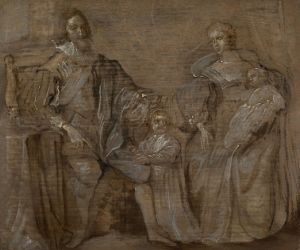
London’s historic Agnew’s Gallery, which announced earlier this month that they will be closing after nearly 200 years in business, plans to sell off its extensive library and archive after its doors shut on April 30, 2013. The remarkable archive is considered one of the most important and complete records of art market dealings to take place over the past two centuries. While Agnew’s specializes in Old Master paintings, the gallery has dealt in everything from Rembrandt (1606-1669) masterpieces to modern canvases by Francis Bacon (1909-1992).
The archive contains stock legers, which are extremely important to provenance research related to the gallery’s areas of expertise. There has been some speculation that the Getty Institute in Los Angeles will bid on the archive as they run a significant provenance research center. However, it is likely that officials will want to keep the archive in the UK.
The gallery’s chairman, Julian Agnew, will continue to work as an advisor to clients and plans to keep the company’s family name.

In 2006 The Cardsharps was sold to the late collector and scholar Sir Denis Mahon for just over $65,000 at an auction at Sotheby’s in London. At the time of the sale, Sotheby’s identified the work as being by a “follower” of the Italian master, Caravaggio (1571-1610). However, after his purchase, Mahon identified the work as a Caravaggio original and obtained an export license for the work that put its value at $15.5 million according to a claim filed at London’s High Court of Justice.
Due to their failure to identify The Cardsharps as an authentic Caravaggio painting, Sotheby’s is being sued by Lancelot William Thwaytes, who consigned the work to the 2006 auction. Thwaytes is now seeking unspecified damages, interest, and costs relating to the price difference between the painting’s 2006 selling price and what he believes it was actually worth on the open market that year had it been properly attributed to Caravaggio. Thwaytes claims that Sotheby’s was negligent in its research prior to the work’s sale, leading to its extraordinarily low selling price.
However, Sotheby’s stands behind its belief that the painting is a copy and not a work by Caravaggio’s hand, citing Caravaggio expert Professor Richard Spear and several other leading scholars. Sotheby’s added that their view was supported by the market’s reception to the painting when it was put up for auction.
Mahon, who passed away in 2011, donated 58 works from his collection worth around $155 million to various U.K. galleries.
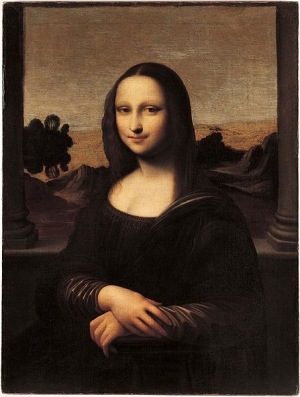
Recent tests on the Isleworth Mona Lisa support the theory that the painting pre-dates the Louvre’s world-famous portrait by Leonardo da Vinci (1452-1519). Hidden in a Swiss bank vault for 40 years, the Isleworth Mona Lisa was unveiled to the public on September 27, 2012, inciting rampant speculation about the work’s history. The Louvre’s Mona Lisa, which is believed to have been painted between 1503 and 1506, has been considered the only one of its kind for centuries.
The Swiss Federal Institute of Technology and Alfonso Rubino, a specialist in “sacred geometry,” carried out tests on the 15th century Isleworth portrait after its unveiling. Carbon dating determined that the canvas was manufactured between 1410 and 1455, shooting down claims that the Isleworth Mona Lisa was a late 16th century copy. Rubino’s geometric analysis also supported the da Vinci attribution, explaining that the geometry of the Isleworth portrait matched the geometry used by da Vinci in his other works including the Vitruvian Man (circa 1490).
The new findings combined with the existing scientific and physical research build a strong case for the Isleworth Mona Lisa. The Zurich-based Mona Lisa Foundation is even on board with the claim, vowing to pursue efforts to prove the portrait’s authenticity.
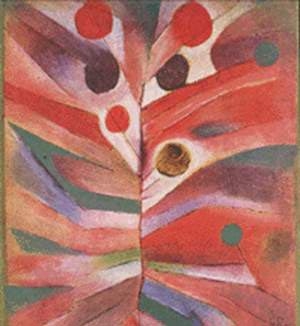
The heirs of Alfred Flechtheim, a prominent Jewish art dealer who fled Nazi Germany during World War II, are urging the German state of North-Rhine Westphalia to return artworks belonging to their relative. The paintings in question, which are by Paul Klee (1879-1940) and Juan Gris (1887-1927), are currently part of the Kunstsammlung Nordhein-Westfalen’s collection in Dusseldorf.
Before the perils of World War II took hold, Flechtheim was an established art dealer in Europe, representing a variety of well-known artists including Klee, Max Beckmann (1884-1950), and a number of French Cubists. Flechtheim ran galleries in Dusseldorf and Berlin, organized many exhibitions, and founded an art magazine. However, Flechtheim’s high standing in the art world made him an easy target for the Nazis. He fled Germany in 1933 shortly after a stream of hateful articles ran in the Nazi press. Flechtheim escaped to Zurich, then Paris before settling in London. After his getaway, Flechtheim’s Dusseldorf gallery was seized and turned over to his former employee Alex Voemel, a Nazi. Flechtheim’s gallery in Berlin was liquidated and his collection, which included works by Pierre-Auguste Renoir (1841-1919), Wassily Kandinsky (1866-1944), Fernand Leger (1881-1955), Georges Braque (1882-1963), and Henri Matisse (1869-1954), was sold.
Mike Hulton, Flechtheim’s great-nephew, claims that Klee’s Feather Plant (1919) and Gris’ Still Life (Violin and Inkwell) (1913) were part of Flechtheim’s private collection and sold under duress for well below their value when he fled Germany. The Kunstsammlung Nordhein-Westfalen does not believe there is enough evidence to support Hulton’s claim. In addition, owners of archives that could help in the case are refusing to let provenance researchers access their information, bringing the dispute to a standstill. Officials from the Kunstsammlung Nordhein-Westfalen assert that if it was proven that Flechtheim was forced to sell the works by Gris and Klee or that he received little to no money for them, that they would part with the paintings, but the current evidence is inconsequential.
Flechtheim’s heirs are currently pursuing restitution for over 100 paintings in museums in the United States, France, Germany, and other European countries.
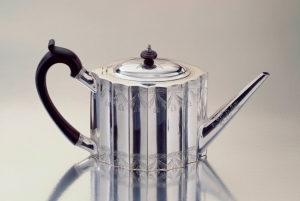
Despite its stellar reputation, the Detroit Institute of Arts’ collection of early American silver has spent the past ten years in storage. Much to the public’s satisfaction, the museum recently decided to put 59 of its most important works back on view.
The Detroit Institute’s silver collection was placed in storage in 2002 while the museum’s historic building was undergoing renovations, which lead to the closure of the American colonial galleries. When the revamped museum reopened in 2007, depleted funds rendered the institution unable to buy new exhibition cases for the silver collection. It wasn’t until 2011 when the Michigan-based Americana Foundation awarded the Detroit Institute a grant that the museum was able to obtain state-of-the-art exhibition cases for their silver collection. The Americana Foundation’s grant also supported new research on the museum’s silver collection.
The Detroit Institute of the Art’s new installation includes American silver as well as two important pieces of late 18th century Chinese export bowls. Highlights include a tankard made in Boston by Edward Winslow (1669-1753) in approximately 1695; a sugar bowl with cover made in New York by Myer Myers (1723-1795), the preeminent Jewish silversmith in colonial America; and a sugar basket made by silversmith and patriot Paul Revere (173-1818) in 1780.
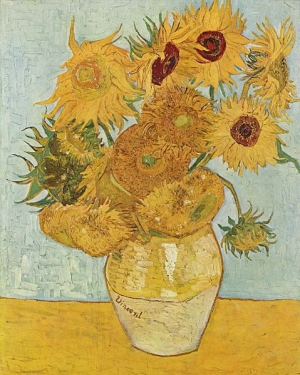
Energy efficient LED lighting, which is widely used in museums across the world, has altered the color of Vincent van Gogh’s (1853-1890) famous Sunflowers (1888). Once a vivid yellow hue, van Gogh’s masterpieces are darkening; scientists have discovered that certain yellow pigments from the 19th century become unstable after exposure to LED lights, turning them a brownish green over time.
Researchers in France and Germany sampled 14 works dating from 1887 to 1890 and tested for the reaction, which affects the oil paint color chrome yellow. A popular pigment at the time, artists such as Paul Cézanne (1839-1906) and Paul Gauguin (1848-1903) often used chrome yellow in their paintings. Upon their discovery, researchers suggested that museums avoid using LED lighting on certain works and switch to a safer illumination alternative.
Van Gogh painted his sunflower series as a welcoming present for his friend, Gauguin, and planned to hang the works in the room where he was to stay while in Arles. A copy by van Gogh from the original series is on view at the Van Gogh Museum in Amsterdam.
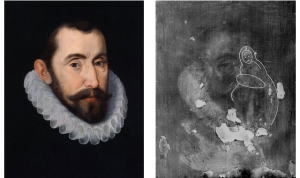
On January 3, 2013 researchers at the National Portrait Gallery in London announced that they had discovered hidden paintings beneath a number of Tudor portraits in the museum’s collection. The findings will be presented in the exhibition Hidden: Unseen Paintings Beneath Tudor Portraits in the museum’s recently remodeled Room 3.
The exciting discoveries were made while researchers were analyzing works as part of the Making Art in Tudor Britain project, which aims to shed light on the working practices of Tudor artists through scientific techniques including infrared reflectography and x-radiography. This technical research, which allows for examination beneath the paint surface, unveiled the images behind the portraits.
Works on view include a portrait of the Lord Treasurer and poet, Thomas Sackville; a portrait of the first Earl of Dorset by an unknown artist, which boasts a completed painting of the flagellation of Christ beneath its surface; and a portrait of Sir Francis Walsingham. Walsingham was Elizabeth I’s Protestant spymaster and Secretary of State. Hidden beneath the portrait of Walsingham is a depiction of the Virgin Mary with the infant Christ and another figure believed to be Joseph or an angel.
Hidden Treasures will be on view through June 2, 2013.
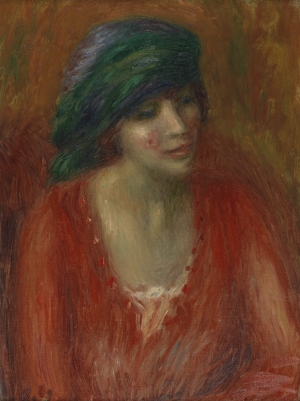
The Pennsylvania Academy of the Fine Arts (PAFA) in Philadelphia announced plans to build a new gallery to display their works on paper collection. The addition will be housed in the museum’s Historic Landmark Building, which was designed by the acclaimed American architect, Frank Furness (1839-1912). A $250,000 grant from The Richard C. von Hess Foundation will be used to fund the project.
Works on paper are a huge component of PAFA’s permanent collection, encompassing over 75% of the museum’s holdings. The collection features drawings, watercolors, sketchbooks, prints, photographs, and experimental media from all periods of American art. Highlights include a collection of photographs by Thomas Eakins (1844-1916), studies and sketchbooks by William Glackens (1870-1938), and works by John Singleton Copley (1738-1815), Mary Cassatt (1844-1926), Arthur Dove (1880-1946), and Robert Motherwell (1915-1991).
The new gallery will allow the institution to significantly expand public access to its vast collection while keeping the light-sensitive objects safe. A separate space will be allotted for scholars conducting research and curators and faculty who will use the collection for educational purposes. PAFA has selected the Philadelphia-based architectural firm Atkin Olshin Schade to design the Works on Paper Gallery. Construction is expected to start early this year and last until Summer 2013.
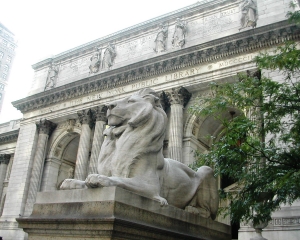
For the first time since announcing plans to renovate ten months ago, the New York Public Library has released a number of important project details. Located in a landmark building on Fifth Avenue in Manhattan, the New York Public Library’s $300 million renovation will be overseen by the London-based firm, Foster & Partners.
Architect Norman Foster announced plans to clear out the back portion of the library, which is now occupied by seven floors of books. The 1.2 million ousted volumes will be relocated to a storage space under Bryant Park as well as another facility in Princeton, New Jersey. Most of the exiled books are now available digitally and library officials purposely chose rarely requested books to be relocated. With the newly freed up space, Foster plans to create a four-level atrium with curving balconies filled with bookshelves and reading tables overlooking Bryant Park. It will be the first time since the library was built in 1911 that patrons will be able to see the park.
The library received a fair amount of criticism after announcing plans to renovate. Critics claimed that officials were not forthcoming enough with project details and that the relocation of books stood in stark contrast to the institution’s purpose. In response, Foster revised plans and 3.3 million of the library’s 4.5 million volumes will remain on site.
The busiest public research library in the United States, the New York Public Library will span 100,000 square feet after renovations are complete. Construction is slated to begin this summer and is expected to last until 2018.
Research on a group of related folk art portraits has yet to yield the identity of the artist. There are neither signed examples nor enough identified sitters within the group to help establish a geographic foundation to support an attribution. A recent addition to the group of known examples that can firmly be credited to this hand on a stylistic basis has been found, however, and opens up a new avenue for research.
|
|
|
|
|